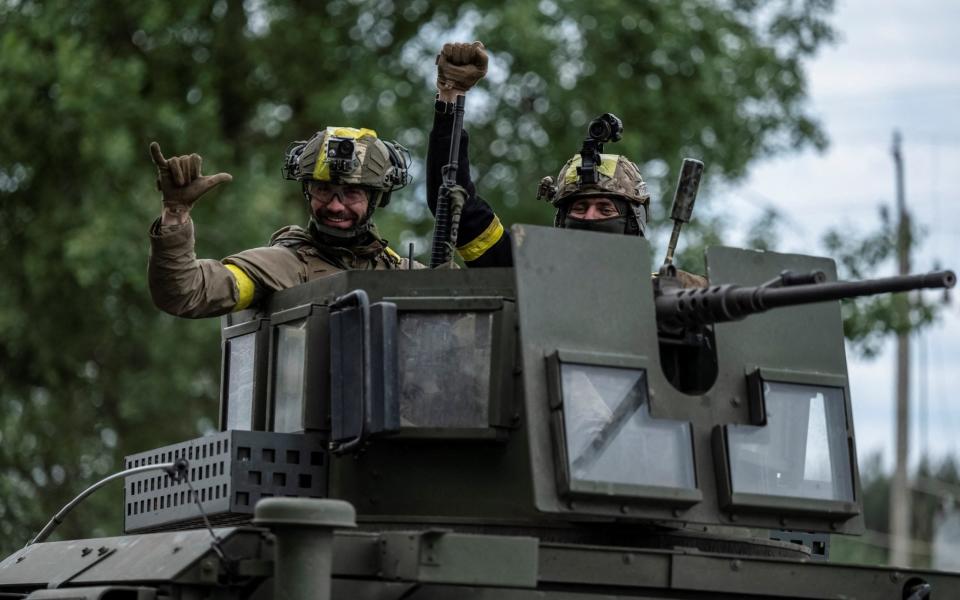How Ukraine’s activity is aimed at shaping the battlefield to its own advantage

For months now, Ukraine has been conducting operations against Russia that military commanders would call shaping activity.
The purpose of such action is to try to create the best possible conditions for any future operations. Shaping operations involve a mix of different weapons, geography and purpose, but they are all designed to overload the opponent’s command and control systems.
Consequently, over recent months we have seen differing types of attacks taking place, from irregular activity along (and just over) the border, to attacks on air bases, fuel refineries and industrial facilities inside Russia.
All the while, Ukraine has sought to seek out and destroy Russian artillery pieces (32 of which were reportedly destroyed on June 3), air defence and electronic warfare systems and other equipment vital to Russia’s defence.
Whatever is happening now in Ukraine likely forms part of that context of shaping operations. We should immediately discount reports from Russia about Ukrainian activity and losses. Until independently verified, we exist in the frustrating but entirely normal fog of war.
We do know, however, that Ukraine is thought to have built up 12 offensive brigades; a mix of tanks and other tracked armoured vehicles, along with less well-armed wheeled vehicles designed to get infantry safely to the fight (the British Army call such vehicles “battle taxis”).
Of these brigades, nine are thought to be fitted out with Western equipment.
One question Ukrainian commanders will be asking is whether or not to mix the home-grown forces with those trained and equipped by Western countries.
Certainly, having a US Abrams, British Challenger 2 or German Leopard 2 tank backing you up will help steady the nerves of troops about to go into battle.
However, once the shooting starts in earnest and Western kit starts to falter, either through mechanical failure or enemy action, to mix the fleets would be to add another layer of logistical complexity to an already fraught situation.
Ukraine may choose instead to have smaller assault groupings with a reserve force built of the same equipment. For example, it may use the three brigades with Ukrainian T-72 at their core as a separate divisional-sized force: two in the assault and one in reserve, to exploit successes or plug gaps that become exposed.
The nine Western brigades could be similarly configured, but with three held back as a much larger reserve force. This would result in roughly three assault divisions with a healthy – and, importantly, uncommitted – force held back and given a number of contingency tasks to plan for.
Any attacks are likely to be spread across the 1,300km (808 miles) front line in order to sow chaos in Russian planning staffs, overloading their ability to react to the fluid, chaotic and violent situation on the ground.
The tricky thing for Russian commanders to decide, however, is when the shaping operation has finished and the main attack has started. Which attack is the diversion and which is the main thrust? It could be many days before anybody knows the answers to such questions.

Military action essentially aims to gain ground or destroy the enemy. These objectives can work together, as long as the sequencing and relative priorities are clearly thought through before any offensive begins.
For their part, Ukrainian military commanders will have a good idea of where they would like to strike, but will be cognisant of the old maxim: “Never forget, the enemy gets a vote.”
Therefore, while they may wish to strike south towards the coast, better to sever the land bridge between Russia and Crimea, they will know this area is likely to be the most heavily defended.
There may be a different imperative from Kyiv’s political leaders. Their priority is likely to set the conditions for any future negotiations.
With this in mind they will want any change in the military situation to impress upon Russian leaders that continued aggression is simply not worth it.
Vladimir Putin, don’t forget, will ultimately be more concerned about his future rule than any historical reimagining.
After all, being an autocrat he’s able to change his mind as he wishes, spin the narrative to his people and claim any retreat is just a goodwill gesture, much like the retreat from Snake Island last year.
As far as Volodymyr Zelensky is concerned, he may prefer a sudden shocking advance in an area that may not, on the face of it, have any huge battlefield significance.
This could be attractive as it would likely limit Ukrainian losses while also sending the message to Moscow that extreme violence could be visited upon Russian troops at a time and place of Kyiv’s choosing.
Ultimately, only a small group knows what the meaning of Monday’s activity means. There is every possibility this has been another element of the months-long shaping operation, designed to identify Russian strengths, dispositions and morale, and the real strike is yet to come.

 Yahoo Sports
Yahoo Sports 